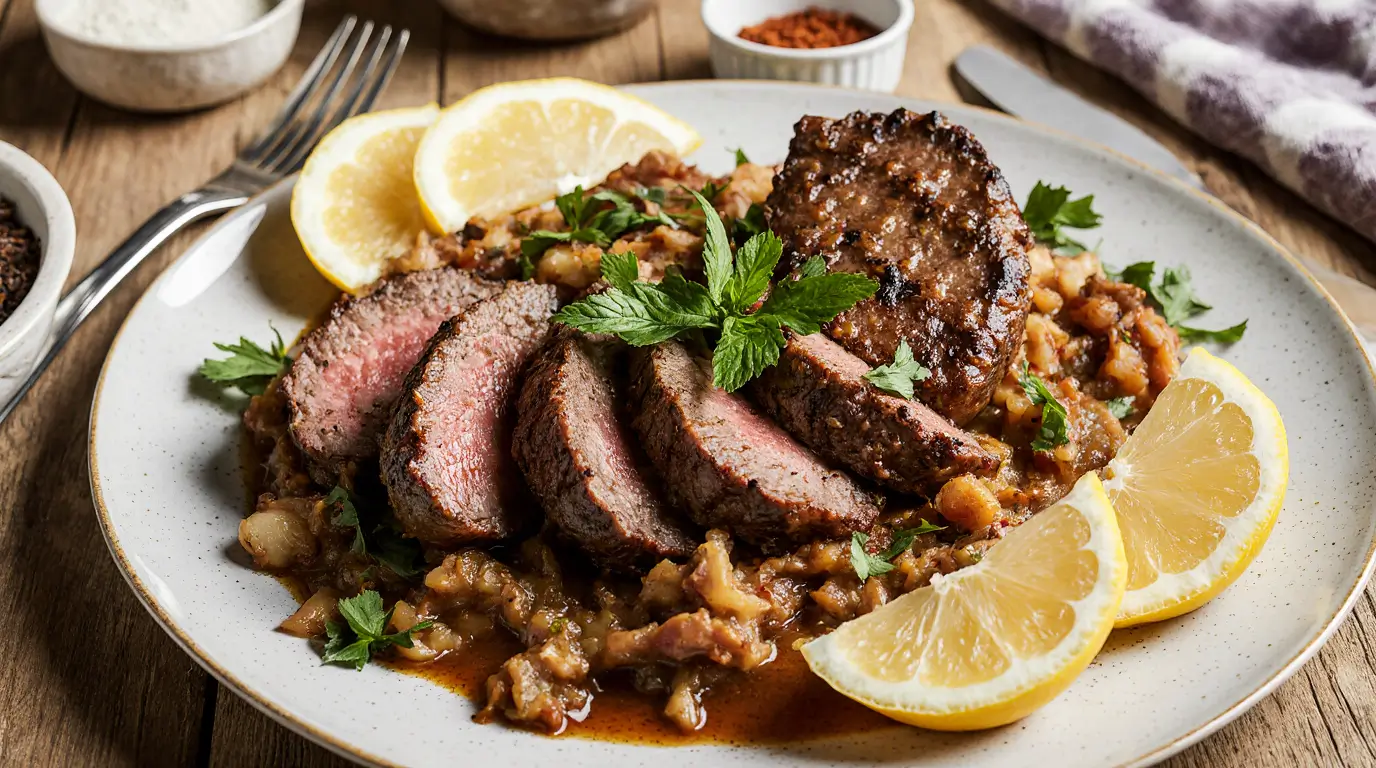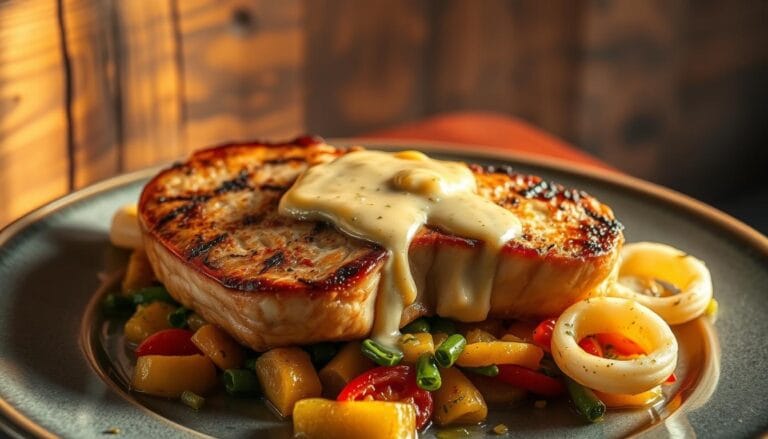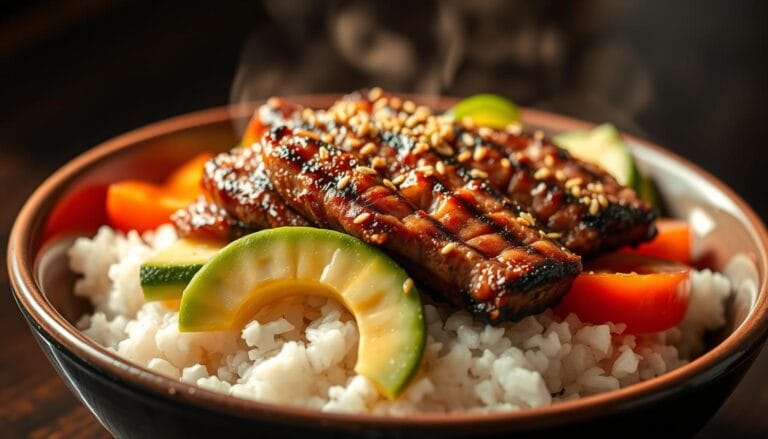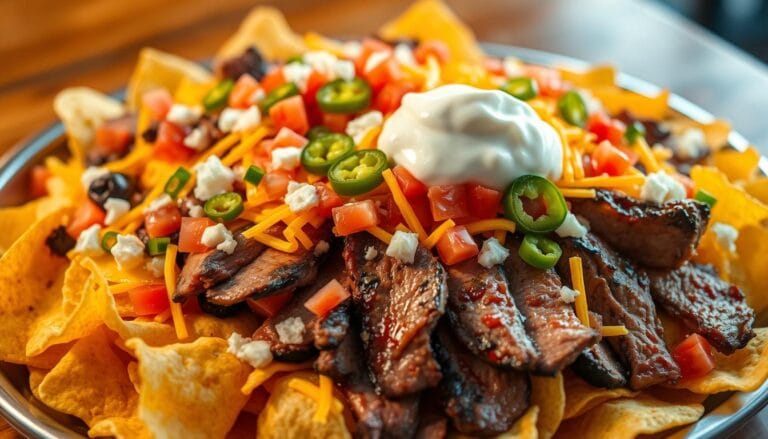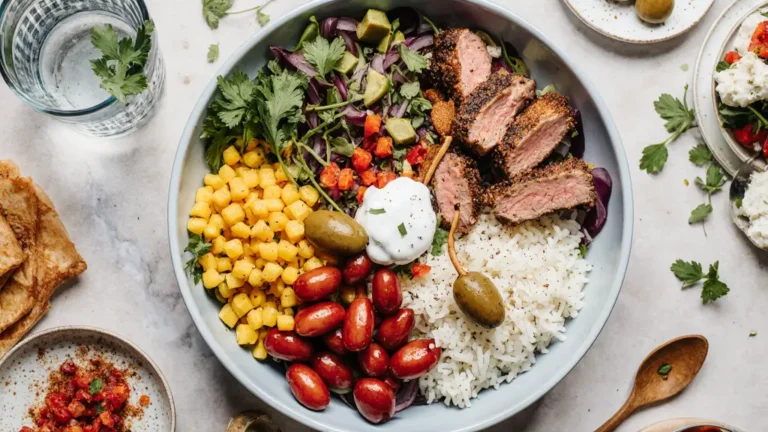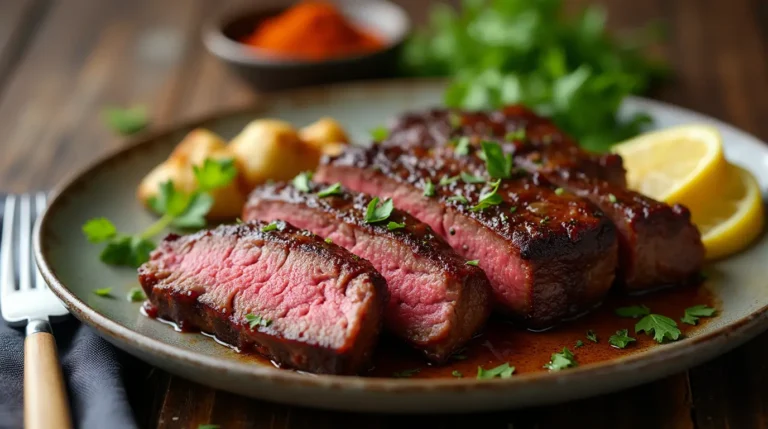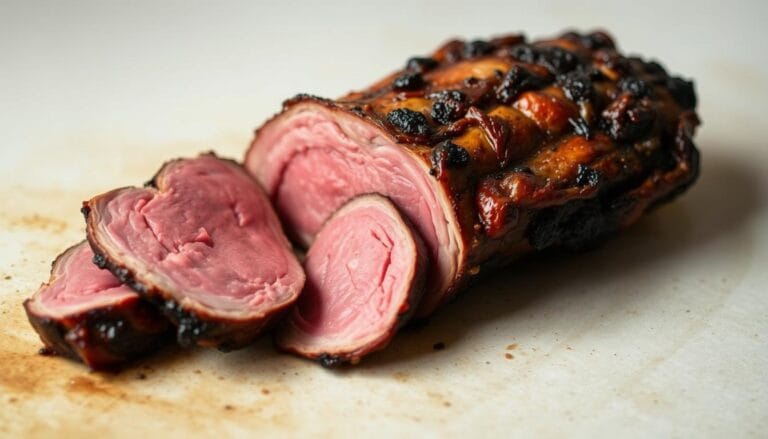Top Blade Steak Recipe: A Perfect Recipe for Delicious Meal
When I first encountered top blade steak recipe twenty years ago, I’ll admit I was skeptical. Here was this relatively inexpensive cut that most butchers kept tucked away, rarely featured on restaurant menus, yet it promised exceptional flavor. After two decades of experimenting with every cooking method imaginable, I can confidently say that top blade steak deserves a permanent spot in your culinary repertoire.
This comprehensive guide will transform how you think about this underappreciated cut. Whether you’re a weekend grilling enthusiast or someone who prefers the controlled environment of indoor cooking, mastering top blade steak will significantly broaden your steak-cooking skills and potentially save you money without sacrificing flavor.
Table of Contents
Understanding Top Blade Steak Recipe: More Than Meets the Eye
Top blade steak originates from the shoulder area of the cow, specifically from what butchers call the “large primal.” This region also gives us chuck steaks and the increasingly popular flat iron steaks. However, top blade steak occupies a unique position among these cuts, offering characteristics that set it apart from its neighbors.
While chuck steaks typically require slow, low-temperature cooking to break down their tough fibers, and flat iron steaks are naturally tender enough for quick-sear methods, top blade steak strikes an interesting middle ground. Despite coming from a muscular, well-exercised area of the animal, it maintains surprising tenderness that doesn’t necessarily require the patience of braising or slow-cooking.
The most distinctive feature you’ll notice when examining a raw top blade steak is the strip of connective tissue running through its center. This silvery line might seem intimidating to inexperienced cooks, but understanding how to work with it—rather than against it—unlocks the steak’s full potential. This connective tissue can be managed through strategic cutting or proper cooking techniques, which we’ll explore in detail.
What truly sets top blade steak apart is its robust, intensely beefy flavor profile. This characteristic richness comes from the hard-working muscles in the shoulder region, resulting in a taste that’s more pronounced than many premium cuts. It’s this flavor intensity that makes top blade steak such an exceptional value proposition for serious steak lovers.
Why Top Blade Steak Deserves Your Attention
The versatility of top blade steak makes it an ideal choice for various cooking scenarios and skill levels. Unlike some cuts that demand specific preparation methods, top blade steak adapts beautifully to grilling, stovetop cooking, oven preparation, and even modern techniques like sous vide cooking.
For beginners, top blade steak offers an forgiving introduction to steak cookery. It doesn’t require elaborate marinades, special tenderizing techniques, or expensive equipment. The primary preparation step—allowing the steak to reach room temperature—mirrors the approach you’d take with any quality cut. This accessibility makes it perfect for building confidence in the kitchen.
The connective tissue that initially seems challenging actually provides opportunities for creative cooking applications. When you slice the cooked steak, you can easily work around the connective tissue, or better yet, cut the steak into bite-sized pieces before or after cooking. This adaptability makes top blade steak excellent for stir-fries, hearty steak sandwiches, pasta dishes, or grain bowls where the meat plays a supporting role alongside other ingredients.
From an economic standpoint, top blade steak delivers premium flavor at a fraction of the cost of ribeye or strip steaks. This value proposition becomes even more attractive when you consider that many diners actually prefer the robust taste of top blade steak over milder, more expensive cuts.
Essential Preparation Techniques for Success
Proper preparation begins long before the steak hits heat. Temperature equilibrium is crucial for achieving even cooking throughout the meat. Remove your top blade steak from refrigeration 30 to 45 minutes before cooking, allowing it to gradually reach room temperature. This seemingly simple step prevents the common problem of a beautifully seared exterior surrounding a cold, undercooked center.
During this resting period, apply generous amounts of salt to both sides of the steak. This early salting serves multiple purposes: it begins breaking down muscle fibers for improved tenderness, draws out surface moisture that would otherwise inhibit proper searing, and allows the salt to penetrate the meat for enhanced flavor throughout.
The high-heat cooking approach works exceptionally well with top blade steak. This method creates the coveted contrast between a deeply caramelized exterior and a tender, juicy interior. High heat also minimizes total cooking time, reducing the risk of overcooking while maximizing flavor development through the Maillard reaction.
Planning your approach to the connective tissue beforehand ensures a more enjoyable dining experience. You can choose to slice around it after cooking, cut the steak into smaller pieces that make the tissue less noticeable, or employ slow-cooking methods that break it down completely. Each approach has its merits depending on your intended use for the finished steak.
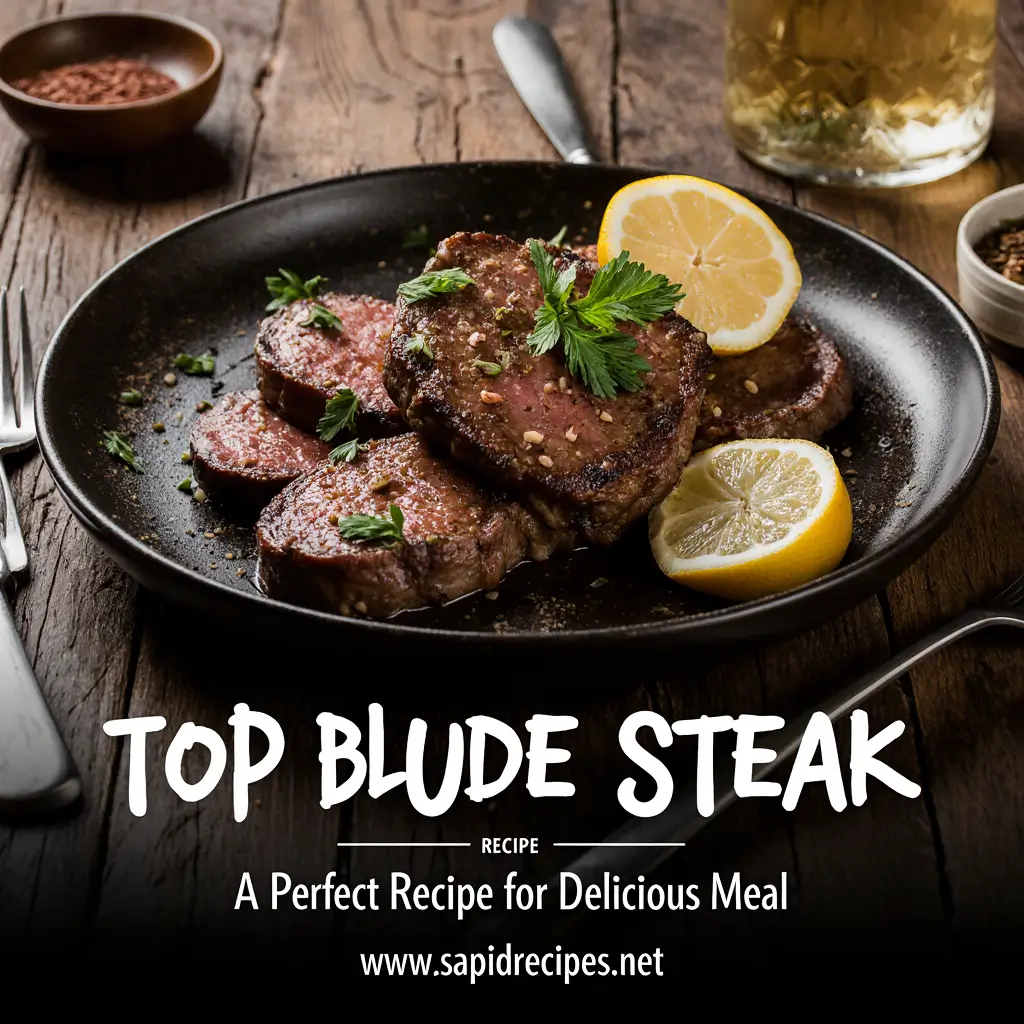
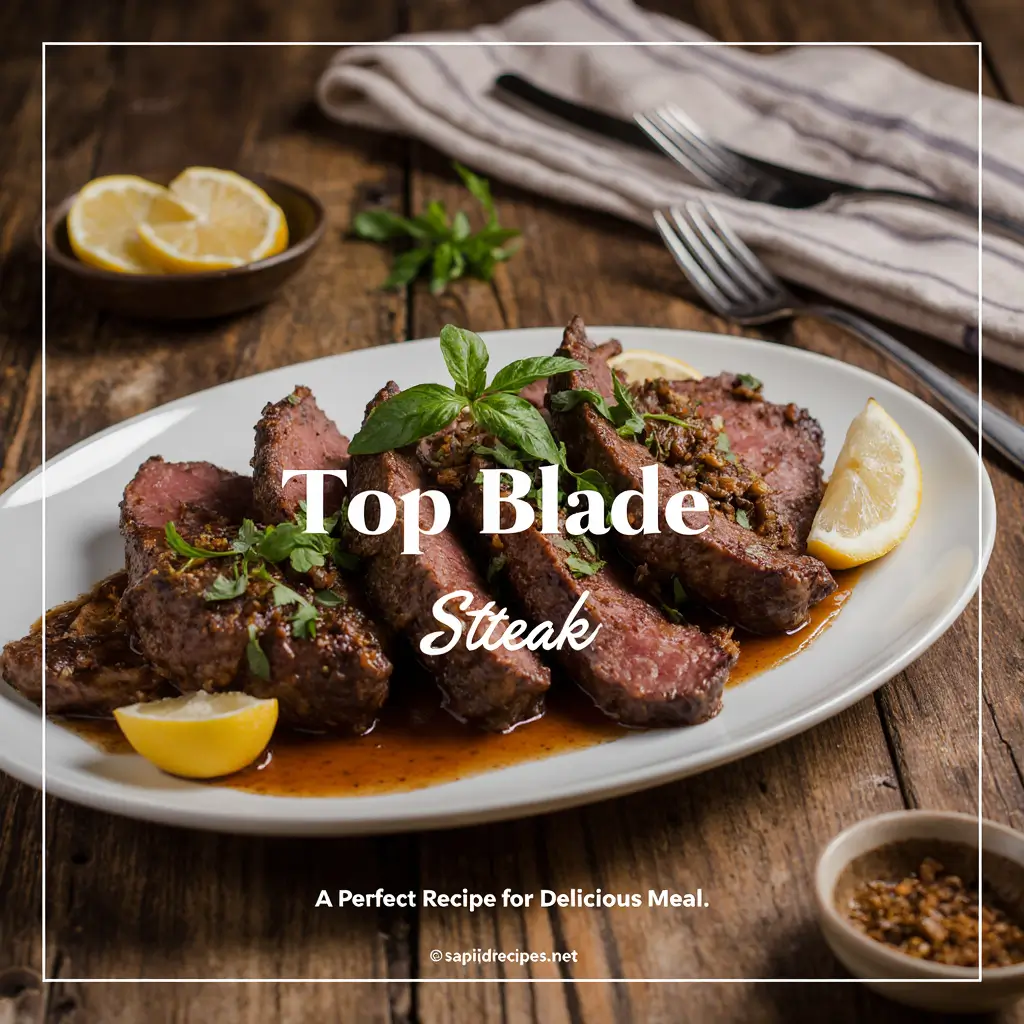
Mastering Internal Temperature Control
Precision in temperature control separates good steak cooking from great steak cooking. For top blade steak, targeting an internal temperature of 125°F before removing from heat typically yields perfect medium-rare results. However, understanding carryover cooking is essential—the steak’s temperature will continue rising during the resting period, ultimately reaching 130-135°F.
Investing in a reliable instant-read thermometer eliminates guesswork and prevents the disappointment of overcooked steak. Insert the probe into the thickest part of the steak, avoiding the connective tissue area which can give false readings.
For those preferring different levels of doneness, here’s your temperature roadmap: Remove rare steaks at 115°F (final temperature 120-125°F), medium-rare at 125°F (final temperature 130-135°F), medium at 135°F (final temperature 140-145°F), medium-well at 145°F (final temperature 150-155°F), and well-done at 155°F (final temperature 160-165°F).
Remember that top blade steak’s natural tenderness means it remains enjoyable even when cooked beyond medium-rare, unlike some cuts that become tough and chewy with extended cooking.
Grilling: The Classic Approach
Grilling top blade steak requires setting up distinct temperature zones on your grill. Create a high-heat area for initial searing and a moderate-heat zone for controlled finishing. This two-zone setup gives you complete control over the cooking process.
While your steak reaches room temperature, prepare your grill with these temperature zones clearly defined. Clean grates prevent sticking and ensure attractive grill marks that enhance both appearance and flavor.
Season your room-temperature steak just before grilling. Place it over the high-heat zone and sear for 2-3 minutes per side, resisting the urge to move or flip it prematurely. This patience rewards you with deep caramelization and attractive crosshatch marks.
After achieving your desired sear, move the steak to the cooler zone and continue cooking for 3-4 minutes, monitoring internal temperature carefully. This indirect heat gently brings the interior to your target temperature without burning the exterior.
Once you’ve reached 125°F for medium-rare, remove the steak from the grill and let it rest for 5 minutes. This resting period allows juices to redistribute throughout the meat, ensuring each bite is maximally flavorful and moist.
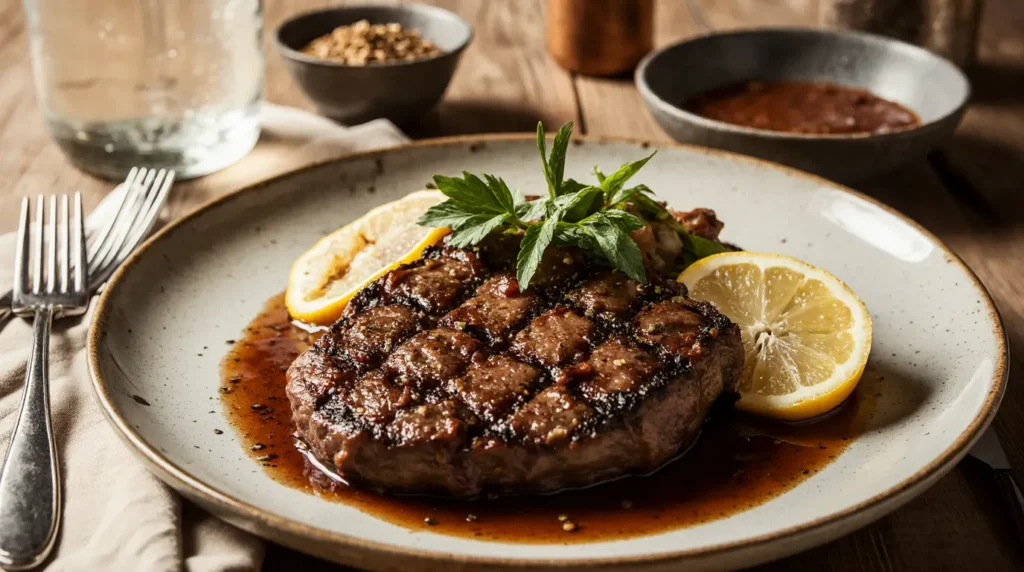
Stovetop Cooking: Indoor Excellence
Stovetop cooking offers superior control and works year-round regardless of weather conditions. Start by preheating a heavy skillet over medium-high heat with a small amount of oil that has a high smoke point—avocado oil or grapeseed oil work excellently.
The key to stovetop success lies in not overcrowding the pan and maintaining consistent heat throughout cooking. Season your room-temperature steak and place it in the preheated pan, listening for the satisfying sizzle that indicates proper temperature.
Sear each side for 2-3 minutes, flipping only once to develop an even crust. After searing, reduce heat slightly and continue cooking for another 3-4 minutes, using your thermometer to monitor progress toward your target internal temperature.
The controlled environment of stovetop cooking makes it easier to achieve consistent results, especially when you’re cooking multiple steaks or preparing them alongside other dishes that require timing coordination.
Oven Method: Low and Slow Precision
Oven cooking, often called reverse searing, offers the most controlled approach to steak cookery. Preheat your oven to 275°F while your steak reaches room temperature. This relatively low temperature allows for gradual, even cooking that’s nearly foolproof.
Season your steak and place it in an oven-safe pan or on a wire rack set over a baking sheet. Cook for 20-30 minutes, checking internal temperature regularly. You’re aiming for about 120°F when you remove it from the oven.
The final step involves searing the oven-cooked steak in a preheated skillet with oil or butter. This brief, high-heat exposure creates the flavorful crust that oven cooking alone cannot achieve. The contrast between the gently cooked interior and the caramelized exterior represents the best of both cooking methods.
Allow the finished steak to rest for 5-10 minutes before slicing and serving. This extended resting time accommodates the longer cooking process and ensures optimal texture and flavor distribution.
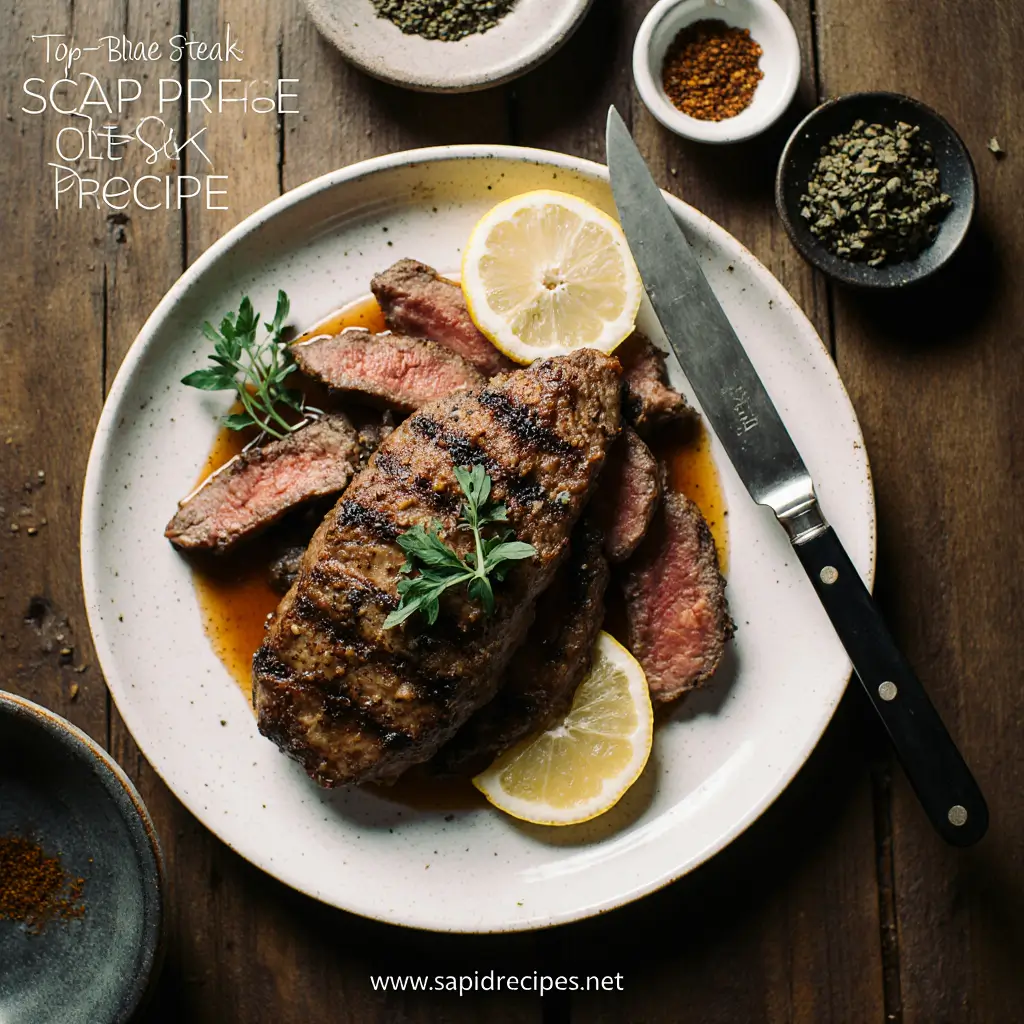
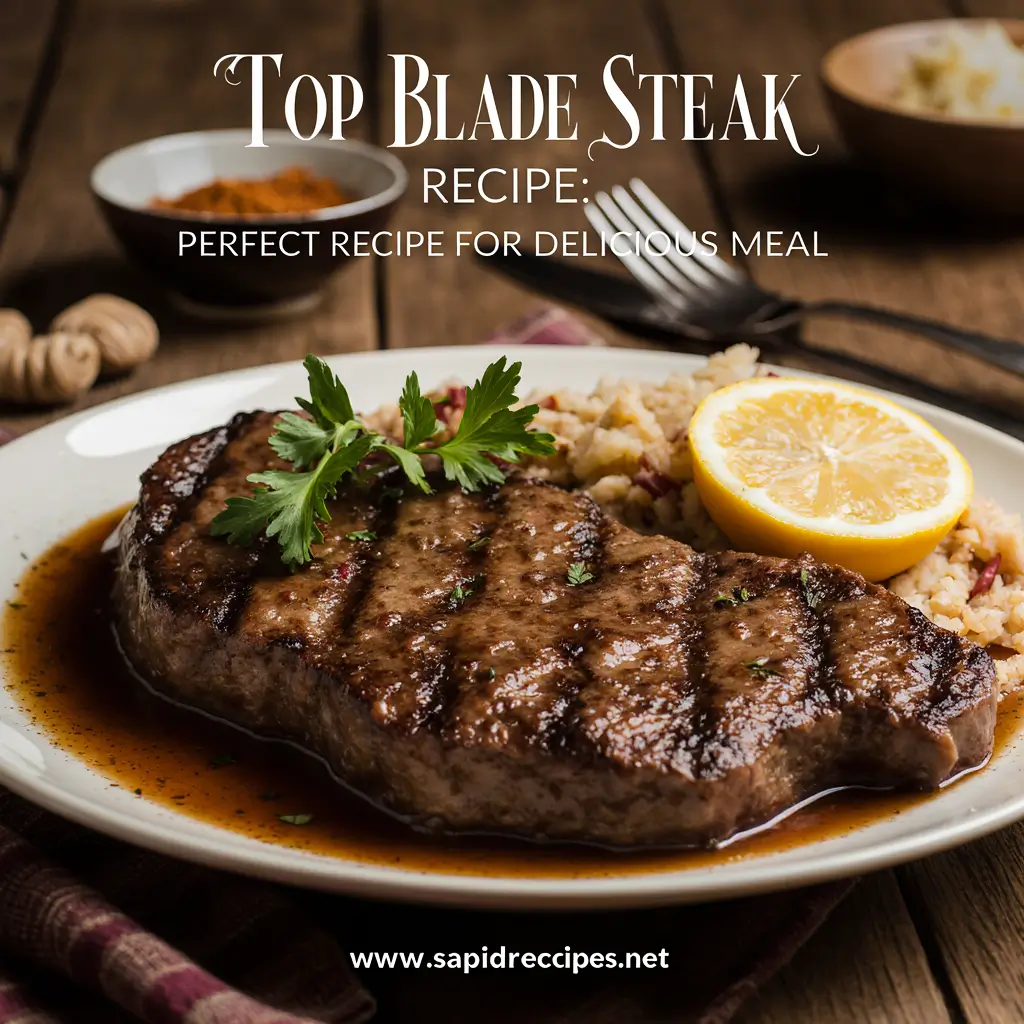
Maximizing Your Success
Top blade steak represents everything I love about cooking: taking an underappreciated ingredient and transforming it into something extraordinary through proper technique and understanding. Its combination of intense flavor, reasonable tenderness, and affordable price point makes it an ideal choice for both everyday dinners and special occasions.
The key to consistently excellent results lies in respecting the steak’s unique characteristics while applying proven cooking principles. High heat for flavor development, careful temperature monitoring for perfect doneness, and adequate resting time for optimal texture—these fundamentals apply regardless of your chosen cooking method.
Whether you’re grilling outdoors, cooking on the stovetop, or using the precise control of oven cooking, top blade steak rewards careful attention with exceptional flavor and satisfying texture. Its versatility extends beyond standalone presentation to applications in composed dishes where its robust taste enhances rather than competes with other ingredients.
After twenty years of working with this cut, I’m continually impressed by its consistency and reliability. Top blade steak proves that exceptional flavor doesn’t require premium pricing, and that understanding your ingredients often matters more than expensive equipment or complicated techniques. Give this remarkable cut the attention it deserves, and it will reward you with memorable meals for years to come.
Did You Try This Recipe ?
There are no reviews yet. Be the first one to write one.

